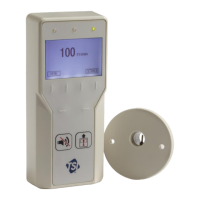User Basics
Part One
User Basics
This section is designed to provide a brief but thorough overview of the product installed. These
few pages explain the purpose (The Instrument) and the operation (Useful user information,
Operator panel, Alarms) of the product. Technical product information is available in Part Two of
the manual.
The Instrument
The Model FHM10 Fume Hood Monitor is able to measure and report air flow in fume hoods and
other exhaust devices such as snorkels and canopies. The Model FHC50 Fume Hood Controller
adds the ability to control airflow to maintain safety and energy efficiency.
There are two main monitor and control strategies that can be used with the Model FHC50 Fume
Hood Controller:
Face Velocity
One of the key components of air flow in a fume hood is adequate face velocity, which is needed
to protect fume hood users. An adequate face velocity will help contain contaminants inside of
the fume hood.
A fume hood exhaust system produces a negative pressure differential between the fume hood’s
interior and the laboratory, causing air to be drawn into the hood. The speed of air entering the
fume hood is called the face velocity. The Model FHC50 Fume Hood Controller can be
configured to continuously monitor fume hood face velocity by measuring the air velocity across a
sensor mounted in the sidewall of the hood. The sensor and opening in the fume hood are driven
by the same pressure differential so the velocity across each is related.
As an alternative to this sidewall sensing methodology, the Model FHC50 can determine average
fume hood face velocity by measuring the fume hood exhaust flow and sash area. When
measuring face velocity in this fashion, the Model FHC50 must use a venturi valve with feedback
to control and measure the exhaust volume. A sash sensor then measures the vertical opening of
the fume hood sash. As an option, the Model FHC50 can use a sidewall sensor to monitor or trim
the face velocity when calculated from sash position and exhaust flow rate.
The Model FHC50 controller modulates the exhaust to maintain an adequate face velocity at all
times through the fume hood.
Exhaust Flow
Certain devices such as laminar flow benches, canopy hoods and snorkels need to exhaust a
certain amount of air to function properly. For these applications, the Model FHC50 can be
configured to measure and control the air flow to a constant volume using a venturi valve or a
flow station with damper.

